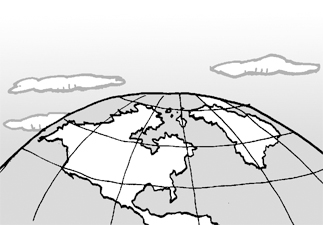All that glitters is not ‘green’ growth

In those days the land was covered with a considerable amount of wooded areas. Vikings cleared away swathes of forest for timber and to create pastures for their livestock to graze on. However, the disappearance of the woods soon caused soil erosion and led to a remarkable decrease in agricultural production.
From the 1300s, the area we now know as Greenland became cold. Many people died of starvation. Until the Danes occupied the territory again in the 18th century, Greenland had been ruled by Inuit who hunted whales and seals.
Greenland became a colony of Denmark in 1775, and it was only last Sunday that Greenland’s people gained self-rule over their territory. Global warming has contributed significantly to the end of the 250-year-long Danish occupation. Thanks to the melting of glaciers, valuable natural resources hidden below the permafrost have been discovered, allowing Greenland to achieve economic independence.
The plot of land under cultivation is now four times larger than it once was, turning Greenland into a land befitting its name.
That Greenland is now a green land is due to the greenhouse gases emitted by humans burning fossil fuels - hardly a matter deserving of congratulations.
If Greenland loses its ice, the melting of the ice sheet will cause sea levels to rise by about seven meters, or around 13 feet. Many of the world’s coasts will be submerged. Countries such as Bangladesh will disappear from the map. In particular, Bangladesh highlights the plight of poor countries. In May of last year, more than 130,000 people died after a devastating tropical cyclone, leaving nearly 2 million homeless.
Poor nations are especially vulnerable to natural disasters, while the world’s largest greenhouse gas emitters have the resources to minimize the possibility of being victims of global warming by building dikes or improving the accuracy of weather forecasts.
With its “green growth” policies, Korea envisions it will become one of the world’s leading green powers. Greenland, meanwhile, in its development policies, has at least demonstrated some consideration for current and future generations - and other species - living on earth.
A persistent controversy surrounding the restoration project of the four major rivers as a driver for green growth is mainly due to a lack of such careful consideration. Although it is necessary to boost the nation’s economy and secure abundant water resources, we should be aiming to develop Korea as a new Greenland.
We must consider our descendants who will live on this land, and the thousands of migratory birds coming to our riversides.
The writer is a JoongAng Ilbo reporter who specializes in environmental issues.
By Kang Chan-soo [envirepo@joongang.co.kr]










with the Korea JoongAng Daily
To write comments, please log in to one of the accounts.
Standards Board Policy (0/250자)